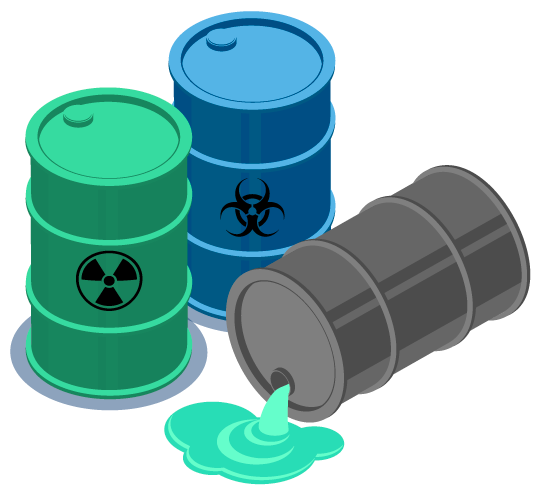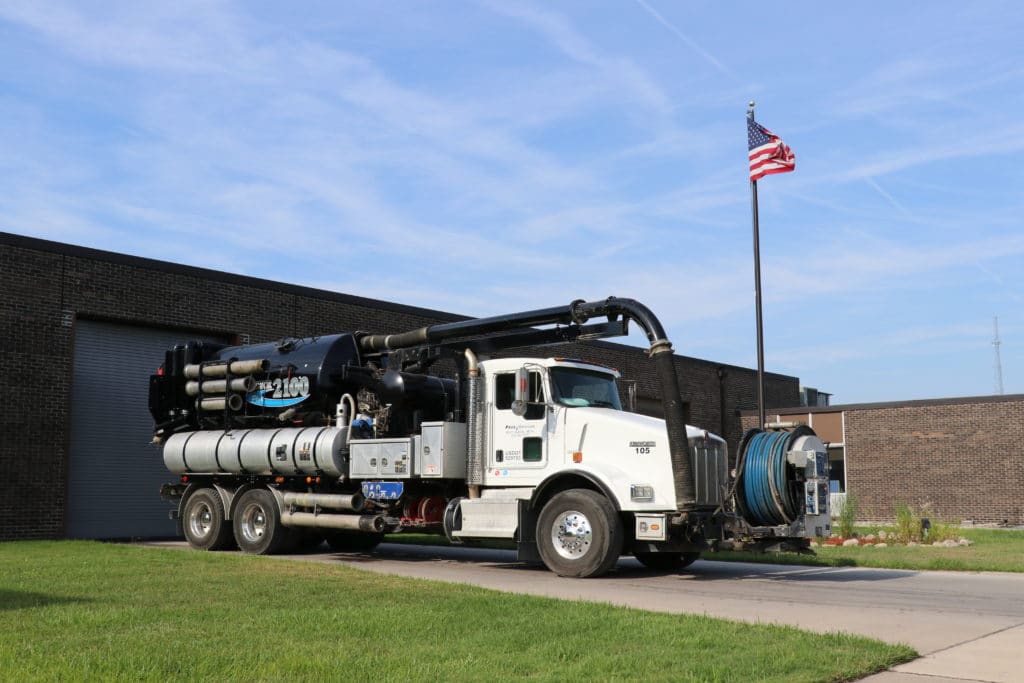Cutting-edge Industrial Wastewater Treatment Solutions: Securing the Environment
Exactly How Fluid Waste Disposal Functions: A Comprehensive Summary of Techniques and Technologies Used

Introduction of Liquid Waste Types
The complexity of fluid waste types requires a thorough understanding of their characteristics and ramifications for disposal. Liquid waste can extensively be classified into numerous types, consisting of industrial, community, farming, and contaminated materials. Each category displays distinct residential properties, requiring particular administration methods to mitigate ecological and wellness risks.
Industrial liquid waste stems from producing processes and frequently consists of a range of contaminants, such as hefty metals, solvents, and natural compounds. Community liquid waste, primarily making up wastewater from families and commercial facilities, contains organic issue, nutrients, and microorganisms (industrial wastewater treatment). Agricultural fluid waste, including runoff from ranches, might consist of fertilizers, chemicals, and animal waste, presenting dangers to water quality and communities
Dangerous fluid waste is characterized by its poisoning, reactivity, or prospective to cause damage. This group includes compounds like acids, bases, and certain chemicals that require stringent handling and disposal procedures. Comprehending these diverse liquid waste types is critical for establishing effective disposal techniques and making sure conformity with ecological policies. Correct category and characterization are necessary for implementing ideal treatment techniques and reducing the adverse effect on public wellness and the atmosphere.
Physical Therapy Methods

Screening is the preliminary action, where bigger bits and debris are eliminated from the liquid waste using displays or grates. This procedure shields downstream tools from damages and makes certain smoother procedure. Following screening, sedimentation makes use of gravitational pressure to different solids from liquids. In sedimentation tanks, much heavier bits work out near the bottom, forming a sludge layer, while the clarified fluid can be further treated.
Purification is an additional crucial method that entails passing the liquid with permeable materials, such as sand or membranes, to record smaller particles. This action enhances the high quality of the liquid, making it appropriate for succeeding therapy processes.

Chemical Treatment Strategies
Chemical therapy techniques are crucial for successfully managing fluid waste, particularly in addressing liquified and colloidal contaminants that physical approaches may not appropriately eliminate. These methods utilize different chemical representatives to neutralize, speed up, or change hazardous substances into much less damaging kinds.
One common technique is coagulation and flocculation, where chemicals such as alum or ferric chloride are contributed to advertise the gathering of suspended bits. This procedure enhances sedimentation, permitting much easier elimination of the resulting sludge. Additionally, oxidation processes, utilizing representatives like chlorine or ozone, are employed to damage down complex organic substances and virus, rendering the waste safer for discharge or additional treatment.
Neutralization is one more vital technique, which readjusts the pH of acidic or alkaline waste streams to neutral levels, preventing potential injury to downstream systems and the atmosphere. Furthermore, advanced oxidation processes (AOPs) use combinations of oxidants and ultraviolet light to deteriorate consistent contaminants, achieving a greater level of therapy efficiency.
Biological Treatment Procedures
Biological therapy procedures play an important function in the administration of fluid waste by making use of microbes to decay raw material and lower contaminant levels. These procedures can be generally classified right into cardiovascular and anaerobic therapies, each utilizing certain microbial neighborhoods to accomplish efficient waste degradation.
Aerobic treatment involves using oxygen to facilitate the breakdown of natural materials by microorganisms. This procedure is generally applied in triggered view it now sludge systems, where aeration tanks provide a conducive environment for microbial development, causing the oxidation of organic pollutants. The resultant biomass can be divided from treated effluent with sedimentation.
On the other hand, anaerobic therapy happens in the absence of oxygen, depending on various germs to break down raw material. This technique is particularly useful for high-strength waste, as it creates biogas, a renewable resource resource, while decreasing sludge production. Technologies such as anaerobic digesters are regularly utilized in industrial and metropolitan applications.
Both anaerobic and aerobic organic treatments not just minimize the ecological effect of liquid waste however also help with resource recuperation, making them necessary parts of sustainable waste management techniques. Their effectiveness, adaptability, and performance sustain their extensive execution across different fields.
Emerging Technologies in Disposal
Cutting-edge techniques to fluid garbage disposal are rapidly advancing, driven by innovations in technology and an increasing emphasis on sustainability. Amongst these arising innovations, membrane layer bioreactors (MBRs) have actually gained grip for their capacity to incorporate biological treatment with membrane filtering, causing premium effluent that can be recycled in numerous applications. MBRs make it possible for smaller footprints and much more effective procedures contrasted to traditional systems.
One more visite site appealing advancement is the usage of anaerobic food digestion combined with nutrient healing technologies, which not only deals with fluid waste yet also produces biogas and recovers important nutrients like nitrogen and phosphorus. This double advantage improves resource efficiency and reduces environmental influence.
Additionally, advanced oxidation procedures (AOPs) are being taken on for the destruction of complicated organic contaminants. These techniques use powerful oxidants and catalysts to damage down impurities at the molecular level, providing a highly effective solution for tough waste streams.
In addition, the combination of expert system and artificial intelligence in waste management systems is maximizing operational efficiency and anticipating maintenance, causing decreased costs and boosted environmental compliance. These modern technologies show a significant change towards even more reliable and lasting liquid garbage disposal methods.
Verdict
In final thought, reliable fluid waste disposal necessitates a thorough understanding of various techniques and innovations. By continuously advancing these approaches, it becomes possible to attend to the expanding obstacles linked with liquid waste, ultimately contributing to environmental security and source recuperation.
Fluid waste disposal is an important facet of environmental management, requiring an extensive understanding of different methods and innovations customized to various waste kinds. Fluid waste can extensively be classified into a number of types, consisting of commercial, local, farming, and harmful waste. Agricultural liquid waste, including overflow from farms, may contain fertilizers, chemicals, and pet waste, posturing threats to water quality and browse around this web-site communities.
Various physical treatment techniques play a vital role in handling fluid waste efficiently - industrial wastewater treatment.In final thought, effective fluid waste disposal necessitates a detailed understanding of different methods and technologies